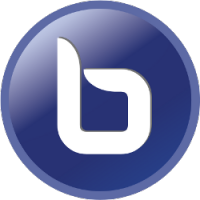Difference between revisions of "BigBlueButton Accessibility Instructions"
JTRobinson (talk | contribs) (Created page with '<div style=float:right; display:block-inline;">File:bigbluebutton.png <br /> </div> ==How to develop accessible extensions, modules, and plugins for BigBlueButton== ===Tab O…') |
JTRobinson (talk | contribs) |
||
| Line 2: | Line 2: | ||
<br /> | <br /> | ||
</div> | </div> | ||
| − | ==How to develop accessible extensions, modules, and plugins for BigBlueButton== | + | ==How to develop accessible extensions, modules, and plugins for the BigBlueButton Flash client== |
| + | Accessibility is an important part of the BigBlueButton application. Not only does it allow users with disabilities to run and participate in meetings, it's also mandated by law that if we CAN make it accessible, we HAVE to. For our purposes, disabilities fall into three main categories: Visual, Auditory, and Motor. This guide focuses mostly on Visual and Motor, simply because of the nature of BigBlueButton and what the CDOT team has run into so far. | ||
| + | |||
| + | With Visual and Motor disabilities there is a common concern of the user being able to navigate through the application, since use of a mouse may not be possible. You'll accommodate this by including your code in the tab order, and also by providing shortcut keys for all user functionality in your code. The rule is, '''if you can do it with a mouse, you need to be able to do it with a keyboard.''' | ||
| + | |||
| + | Some Visual disabilities require the user to have a screen reader, which is what it sounds like: an application that reads out the content of the screen to the user. In Flash, this is done mainly through the accessibilityDescription property. The rule here is, '''all relevant data on the screen must have an accessibilityDescription.''' | ||
===Tab Order=== | ===Tab Order=== | ||
Revision as of 14:35, 2 March 2013
Contents
How to develop accessible extensions, modules, and plugins for the BigBlueButton Flash client
Accessibility is an important part of the BigBlueButton application. Not only does it allow users with disabilities to run and participate in meetings, it's also mandated by law that if we CAN make it accessible, we HAVE to. For our purposes, disabilities fall into three main categories: Visual, Auditory, and Motor. This guide focuses mostly on Visual and Motor, simply because of the nature of BigBlueButton and what the CDOT team has run into so far.
With Visual and Motor disabilities there is a common concern of the user being able to navigate through the application, since use of a mouse may not be possible. You'll accommodate this by including your code in the tab order, and also by providing shortcut keys for all user functionality in your code. The rule is, if you can do it with a mouse, you need to be able to do it with a keyboard.
Some Visual disabilities require the user to have a screen reader, which is what it sounds like: an application that reads out the content of the screen to the user. In Flash, this is done mainly through the accessibilityDescription property. The rule here is, all relevant data on the screen must have an accessibilityDescription.
